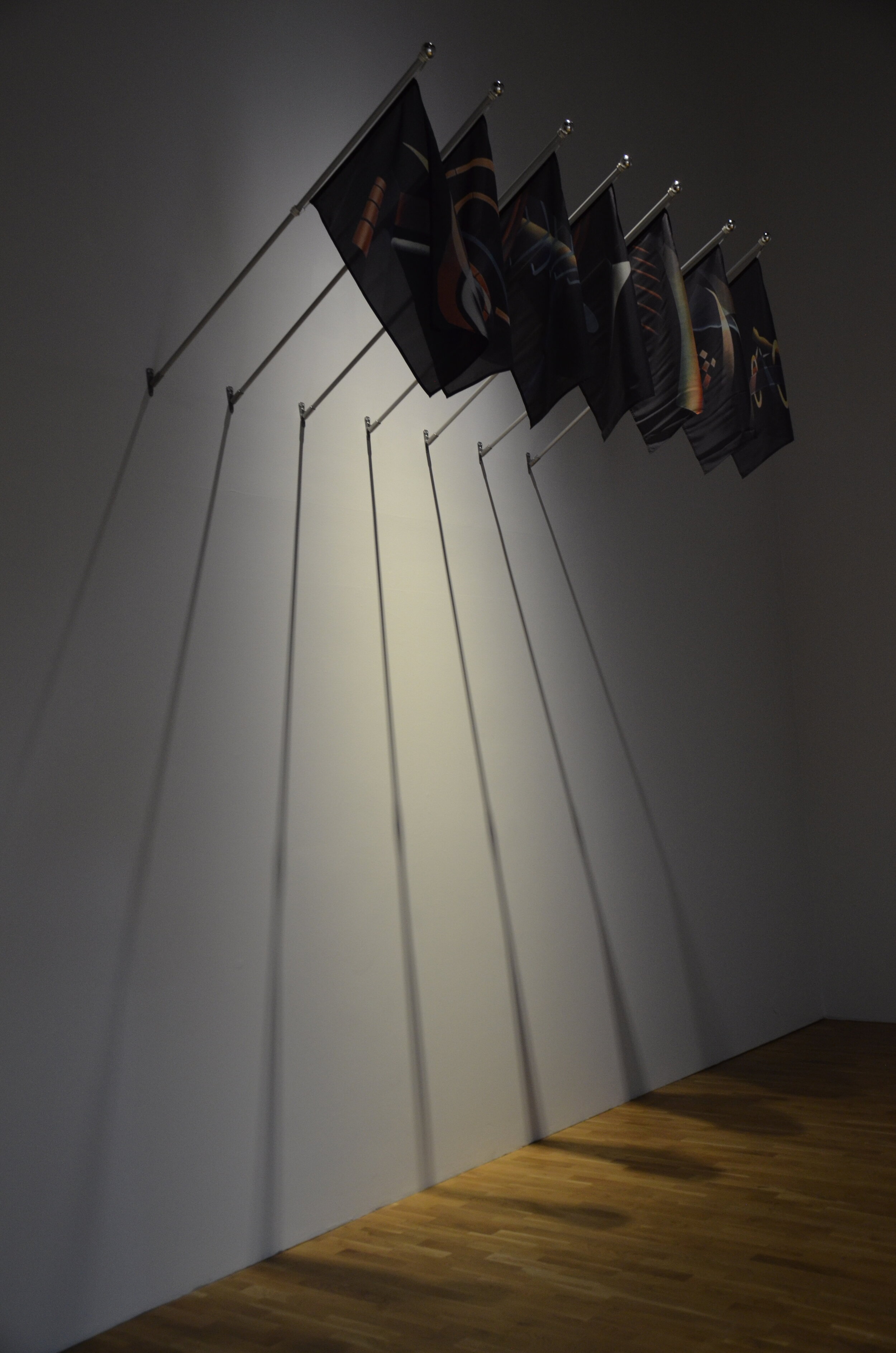TO NEW HORIZONS
2013
Film | 9 mins
B&W
7 Flags
50 cm x 70 cm
The film To New Horizons draws its inspiration from the relationship between the United States and the Soviet Union in the 1930's, when American engineers, construction managers and designs were used for the planning and building of Stalin’s first Five-Year plan for the industrialisation of the Soviet Union. In the arts and specifically in the culture of cinema there were exchanges and influences between the two powers, revealing a co-dependency of these two cold war enemies.
My aim was to create an ambivalence concerning what is American and what is Russian, and to point out that many of our ideas about these matters we have learnt through the mechanisms of Propaganda and Public Relations.
The film To New Horizons is an assemblage of a number of elements: a voice over and film footage from a General Motors promotional film made for the World Fair in New York in 1939-40; Russian films such as Kara Bugaz by Aleksandr Razumnyj from 1935, Esfir Shub’s K.Sh.E. (Komsomol: Patron of Electrification or Chief of electrification) from 1932, Komsomol by Joris Ivens from 1933 (Komsomol refers to youth), and The Circus by Grigorii Aleksandrov from 1936; as well as the American film Dames from 1933 by the choreographer and director Busby Berkeley.
In To New Horizons we see the enormous industrial project Magnitogorsk, a steel plant/town that was modelled after the American town of Gary in Indiana, USA. In a key scene in To New Horizons we see and hear an American engineer or construction manager give instructions to Russian workers in Magnitogorsk.
By combining and confronting the narratives of the archival films in an “assemblage” manner, I seek to create a new open narrative. Using archival films from the 1930s and showing, re-organizing them today is in itself a “critical montage”, a re-appropriation or transformation of the narratives of these historical documents.
“It was when existence was just like the movies, just like the advertising or propaganda image, that one felt truly alive”.
— Dreamworld and Catastrophe, 2000, Susan Buck Morss
New Horizons, 2013, B&W film, 8 min 50 sec
In the 1920’s and 30’s and throughout the whole Soviet Era, cinema was central to the construction of mass society. The same was true of the United States of the same period. If the Soviet screen provided a prosthetic experience of collective power, the Hollywood screen provided a prosthetic experience of collective desire. You can say that mimesis replaced written arguments and people became part of the collective by mimicking its look.
In To New Horizons there is also a focus on similarities, exchanges and influences between the two cultures, as can be seen in the split-screen sequence (see uploaded video) featuring Busby Berkeley’s Dames from 1933 and Grigorii Aleksandrov’s The Circus from 1936 – the aesthetics, the choreography, the scenography and the camerawork in the two films is very similar, almost identical.
Of course, like most Soviet film directors in the 1930’s, Aleksandrov had Busby Berkeley in mind for this work. And yet the tableau vivant of the masses as ornament had a specifically Bolshevik precursor as well. It had been scripted into the earlier spectacular celebrations of the October Revolution.
To New Horizons also consist of a series of flags with colour prints with the format of 50cm x 70 cm. The prints on the flags are enhanced stills from an animated sequence featured in the General Motors promotional film which can be seen at the end of the film.
By extracting these still images and creating independent artworks, while keeping the original source material accessible, the formal transformation of the document is only stylistic. It plays with the re-appropriation made back and forth between the USA and USSR, as these stills from an American corporate commercial shows the current aesthetic trends with strong references to artists such as the Russian constructivist El Lissitsky, Rodchenko and Alexandra Exter.










